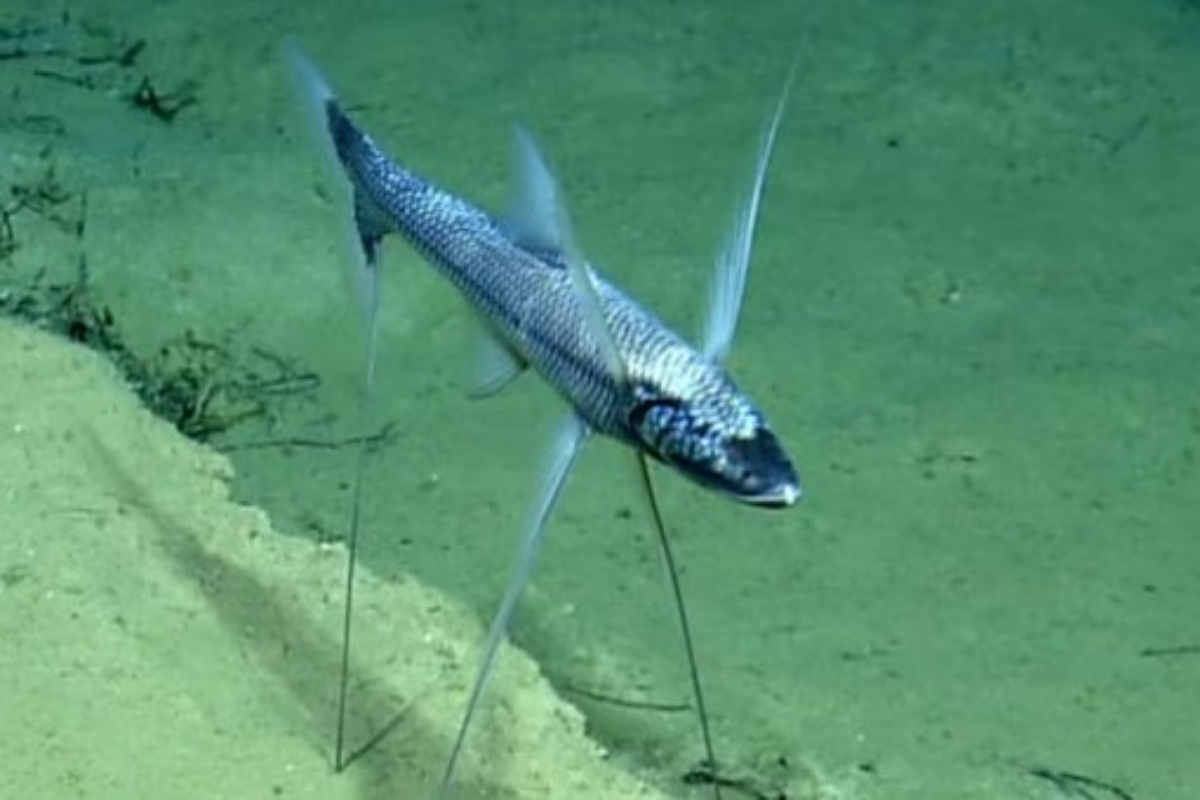During examinations of two new marine parks, a group of experts discovered the most peculiar sea animals from the deep ocean, which has left them baffled. Yi-Kai Tea, a fish researcher, turned to Twitter to post photos of the flying fish he discovered during his examination. The fish may be seen soaring with their wing-like fins in the photos. Along with the stunning images of these flying critters, he commented, “Been photographing flying fishes all day every day. I think we’re up to 6 species now, but I’ll need to check. What a stunning group of fishes these are.” He also provided some fascinating information about it. “Did you know, flying fishes can have either one or two pairs of enlarged wing-like fins?” he said.
“In addition to their remarkable fins, they also have asymmetrical caudal fins, with a longer lower lobe. They use this to taxi across the water surface before pushing themselves off for the second round of flight,” he stated.
Been photographing flying fishes all day every day. I think we’re up to 6 species now, but I’ll need to check. What a stunning group of fishes these are! #RVInvestigator #InvestigatingtheIOT @CSIRO @austmus @museumsvictoria @BushBlitz2 @ParksAustralia pic.twitter.com/H0UWi5zNt2
— KaiTheFishGuy (@FishGuyKai) October 5, 2022
The tripod fish, also known as the tripod spider fish, grabbed the curiosity of experts. It possesses longer pelvic fin rays and a prolonged tail fin. It makes use of these to ‘stand’ immobile on the bottom. “Introducing one of the most fascinating fish that we’ve found in our #deepsea surveys of the waters near Christmas and Cocos (Keeling) Islands. It’s the #tripodfish or tripod spiderfish,” the caption stated. It’s the tripodfish, sometimes known as the tripod spiderfish.” Look at the post below.
Introducing one of the most fascinating #fish that we’ve found in our #deepsea surveys of the waters near Christmas and Cocos (Keeling) Islands …
It’s the #tripodfish, or tripod spiderfish!! 🐟🔭🕷️
Image: Ocean Exploration Trust/WoRMS via @FishesAustralia. #InvestigatingTheIOT pic.twitter.com/i7ZLywAXNM
— Bush Blitz (@BushBlitz2) October 18, 2022
Not only that, but they found a hermit crab. To give themselves structure, these goopy soft corals integrate sand elements. Check out the post below.
According to Sciencealert, a group of researchers identified the most exotic aquatic species while investigating two new marine parks. It’s around 2,500 kilometres off the west coast of Australia. Fish on stilts, oozing creatures, deep-sea batfish, and other animals were discovered by the researchers.
“The region is covered with gigantic seamounts constructed during the dinosaur era,” says Tim O’Hara, senior curator of marine invertebrates at Museums Victoria (MV), “the region is covered with massive seamounts formed during the dinosaur era and the region sits at a critical juncture between the Pacific and Indian Oceans.” O’Hara went on to say that they are very excited about the prospect of discovering new species, and possibly even new branches of the tree of life, that have previously been hidden beneath the waves in this unexplored region.
[embedpost slug=”do-you-know-the-difference-in-big-and-tiny-toilet-buttons/”]

